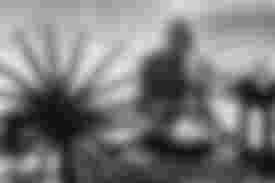
Gandhiji's life is a textbook for the world. The rising generation must know the values he upheld. Undoubtedly, there is no political leader who is so respected globally. You know that October 2 is Gandhiji's birthday. It is celebrated in colleges and services. Let such celebrations take place. At the same time, let us try to reflect Gandhiji's words in our actions.
Mahatma Gandhi at a glance
Born: October 2, 1869
Full Name: Mohandas Karamchand Gandhi
Place of birth: Porbandar, Gujarat
Father: Karamchand Gandhi
Mother: Putlibhai Gandhi
Wife: Kasturba Gandhi
Children: Harilal, Manilal, Ramdas and Devdas
Education: Law Degree (University College London)
Significance of Birthday: Gandhi Jayanti ^ Public Holiday, International Day of Non-Violence
Other names: Bapu, Mahatma (Great Soul)
Known as: The new non-violent mode of struggle in the Indian freedom struggle
Autobiography: My Truth-Seeking Experiments
Died: January 30, 1948
Mohandas Karamchand Gandhi was born on October 2, 1869 in Porbandar, Gujarat to a Vaishya family. His father was Karamchand Gandhi. His mother, Putlibai, was a member of the Putlibai Bania community. In 1887 Gandhiji passed matriculation.
Married to Kasturba in 1883. His father died in 1885. In 1887 he returned to England to study for the barrister's examination.
He returned in 1891 after a barrister's examination. He later moved to South Africa in 1893. There I really experienced the racism against blacks. One time he was dragged off the train and another time he was pulled out of the horse carriage. Led struggles for blacks.

He came to India in 1896 and returned to South Africa with his wife. He came to India in 1901 and volunteered for the Calcutta Congress.
In 1902, the Indian Opinion was re-launched in South Africa. In 1906 he adopted celibacy. Tolstoy Farm was founded in 1910. In 1915, the great poet Tagore called Gandhiji 'Mahatma' and honored him. Sabarmati Ashram was established in 1917. In 1918, he started spinning in Charkha. In 1920, he took off his shirt and hat and became a half-naked fakir.
In 922 he led the non-cooperation movement. As a result, he was sentenced to six years in prison. It was during his imprisonment that Gandhiji wrote his autobiography, 'My Truth-seeking Examinations'. The famous expedition took place in 1929. He was traveling with 72 of his followers. Support announced for Vaikom Satyagraha and Guruvayur Satyagraha. Seva Ashram was established in 1935.

The Quit India Movement was in 1942. Kasturba died in 1944. She died at the Akhagan Palace Jail. India became independent on August 15, 1947. The Partition of India in 1947 hurt him.

The first book written by Mahatma Gandhi was about Hind Swaraj or Indian Home Rule.Gandhiji's first book, Hind Swaraj, was written in 1909. Gandhiji wrote a book in his native Gujarati on a voyage from London to South Africa. Gandhiji completed the book by writing continuously from November 13 to 22, 1909. The 50 pages of Hind Swaraj with 271 manuscript pages were written by left hand.
Hind Swaraj was first published in 1909 as a fragment in the Indian Opinion Weekly, published from South Africa.
Hind Swaraj was first published in Gujarati in book form in 1910. In retaliation for the ban on Hind Swaraj in India by the then Bombay government, Gandhiji published an English translation of Hind Swaraj the same year.Hind Swaraj is the only book translated directly into English by Mahatma Gandhi.
Gandhiji chose the style of presentation for the book, which is a dialogue between the editor and the reader. Throughout the Hindu Swaraj, Gandhiji's great idea of non-violence was emphasized. Gandhiji presented his rational conclusions about the acceptability of the principles of non-violence in his work, albeit a short one. Gandhiji described the Hindu Swaraj as a gospel that puts love in place of hatred.
Dandi March and Salt Satyagraha
The Dandi march was led by Gandhiji in violation of the Salt Act enacted by the British. The production and sale of salt was monopolized by the government. In addition, sales tax was levied on salt. On March 12, 1930, Gandhiji and his followers set out for the shores of Dandi. On April 6, Gandhiji violated the Salt Act by making salt off the coast of Dandi.
Day of Non-Violence
The decision to celebrate October 2 as the International Day of Non-Violence was inspired by the United Nations Satyagraha Shatabdi Conference organized by the All India Congress Committee in Delhi. More than 400 foreign delegates from more than 30 countries attended the conference. The resolution, introduced by the then Minister of State for External Affairs Anand Sharma in collaboration with 142 foreign countries, was unanimously approved by the 191-member UN General Assembly on June 15, 2007.
South African life
In 1888, it was converted into a political laboratory for Gandhi, who went to South Africa to study law. He started the Indian Opinion newspaper. In 1906, Gandhiji's Satyagraha was put into practice. Gandhiji first staged a satyagraha in South Africa against the Asiatic Law Amendment Ordinance Bill.
In 1893, Gandhi returned to South Africa. Racism in South Africa inspired him to think in a new way. Neither Indians nor blacks were allowed on the train in high-altitude piles. They were severely punished even if they drank water from public taps.
Gandhi was once beaten for traveling in a Class A coupe that only white people could travel in, and was dropped off in Peter Maritzburg on the way. He then continued his journey in the lower class, where he was beaten by a trainee guard for not giving him a place. After the Iowa incident, Gandhi decided to work against such practices. Some time was set aside for practice and other time for such activities.
Grama Swaraj
The Swadeshi movement does not simply mean boycotting foreign products and using indigenous products. The Indigenous Movement demands that if our neighbor does what we want him to do, he should be willing to leave him and seek someone else who is far enough away. Self-sufficient villages and self-reliance are the essence of Gandhi's dream of Grama Swaraj.
Satyagraha concept
'By Satyagraha I mean to hold fast to the truth. Satyagrahi should not forget that there is a difference between evil and the person who does evil. Do not harbor hatred or animosity towards those who do evil but evil. The truth seeker always tries to subdue evil with good, anger with love and untruth with truth. Therefore, one who is engaged in the Satyagraha movement needs to make sure that he is completely free from human weaknesses such as anger and hatred and that he has not caught the evils that he is trying to eradicate with his Satyagraha. For this, Satyagrahi should carefully examine himself '^ Gandhiji.

Non-cooperation movement
Gandhi entered Indian politics in 1915. It was the influence of Gandhiji that gave a new direction to the Indian freedom struggle. People were urged to use khadi instead of British textiles. The Non-Cooperation Movement called on the people to boycott British educational institutions and courts, to resign from government jobs, to stop paying taxes and to relinquish British titles and titles.The Iowa movement received widespread popular support. The unprecedented popular uprising that resulted from the agitation posed a serious challenge to foreign rule, but Gandhi withdrew from the non-cooperation movement following the Chauri Chaura incident.
If you have liked this article, please....
Comment
up-vote
Like
Share and Subscribe
Thank you for reading
Great thanks @ TheRandomRewarder





Amazing article by you